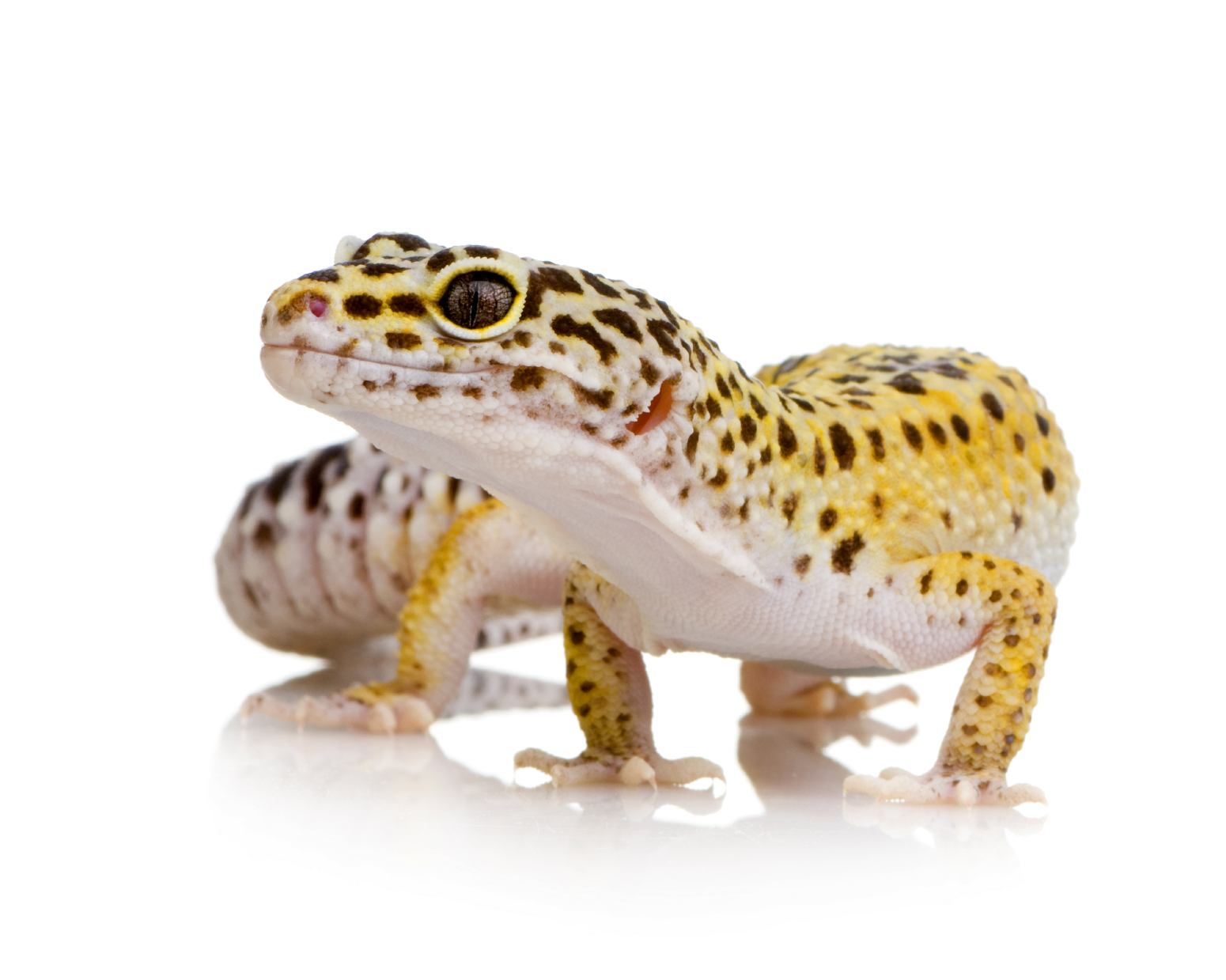 |
| Printable Version: Fluker's Leopard Gecko Care Sheet and Product List (PDF) |
Download |
| Video Tutorial: Fluker's Leopard Gecko Setup & Care Tips with Dr. Mark Mitchell (YouTube) |
Watch Now |
Leopard Gecko Habitat Setup and Care |
|
Leopard geckos make great pets! They are full of personality, readily available, and easy to care for. But it’s important to do your research before you come home with your new pet. Be sure to have all your supplies ahead of time, such as housing, accessories, and food. This will help ensure your new leopard gecko has an easy and healthy transition to your care. Quick Facts● Unlike most geckos, leopard geckos have eyelids, allowing them to blink and sleep with their eyes closed. ● They have little claws instead of sticky pads like other types of geckos ● Adult leopard geckos average 8-10 inches long and can live 10-20 years. ● They have a tail that can come off if grabbed by a predator, giving them time to escape. |
EnclosureYou’ll want to keep your leopard gecko in a well-ventilated 10-20 gallon tank with a screened lid. Any tank you choose should be at least a foot tall. Up to three leopard geckos can live in the same habitat, but only one should be male. |
SubstrateA wide range of appropriate substrates are available. For younger geckos, cage carpet, liners, or paper towels work well. For adults, fine reptile sand can also be used to provide a more naturalistic environment. If you’re concerned about your gecko ingesting any sand, you can always feed it in a separate enclosure. |
AccessoriesGeckos like to play hide and seek. Place rocks, branches, or commercial reptile caves on the cool side of the habitat. Also be sure to include a hide box. It provides a micro-climate with extra humidity that your reptile can get in and out of as they need it. Adding some moistened moss to the box will also help when they’re ready to shed their skin. Mist the moss periodically with a spray bottle. |
Temperature & LightingLeopard geckos are desert animals but are active primarily at night when temperatures are cooler. At the warm end of your enclosure, aim for a temperature of 85-90 degrees F. Ambient temperature should be about 75 degrees F. Measure temperature closely with a thermometer. New studies show that leopard geckos benefit greatly from 1-2 hours of UVB light exposure daily. Use a regular white light incandescent heat bulb to provide a basking spot during the day and a red heat bulb, blue/purple heat bulb, or ceramic heat emitter to provide supplemental heat at night. |
Diet & NutritionLeopard geckos are insectivores and love the hunt! You should feed them a variety of live crickets, waxworms, mealworms (in moderation only), roaches, and superworms. Insects must be gut-loaded at least 24 hours prior to feeding and then dusted with a calcium/D3 supplement at every feeding for young lizards and every other feeding for adults. Juveniles should be fed a few crickets daily, but adults can skip several days between feedings. Provide a shallow dish of water at all times and put a large rock in the bowl so any crickets that accidentally get in the water can escape. |
Handling & SafetyHandle your new leopard gecko infrequently until it has time to settle into its new environment. Ensure you support the entire body and never pick it up by the tail. Leopard geckos can easily drop their tail when they feel threatened. Tails will quickly regrow but will never look quite the same as the original. Leopard geckos are not prone to biting and are usually slow-moving. They have perky personalities and are known to be very vocal, especially when they are hungry. |

